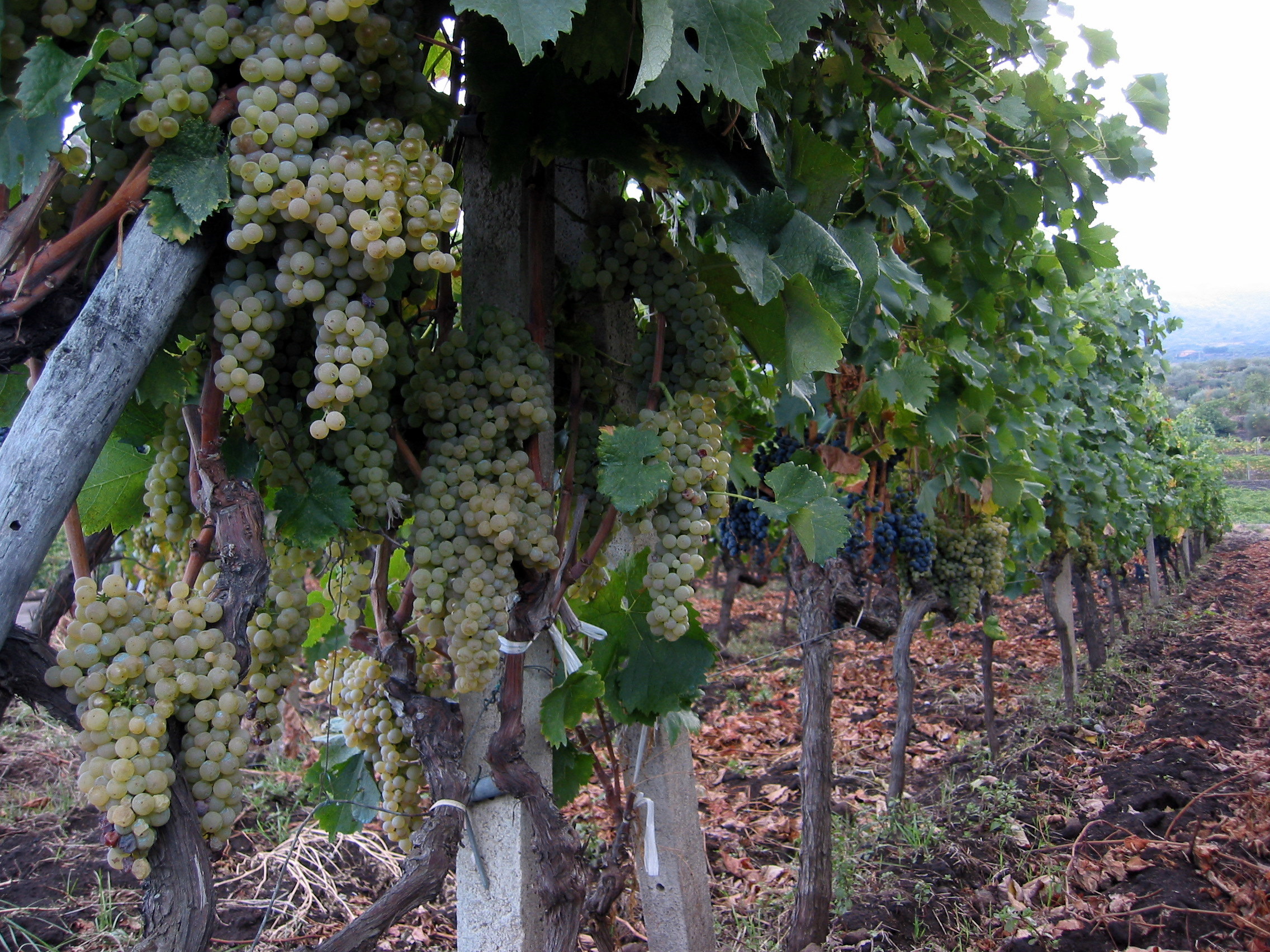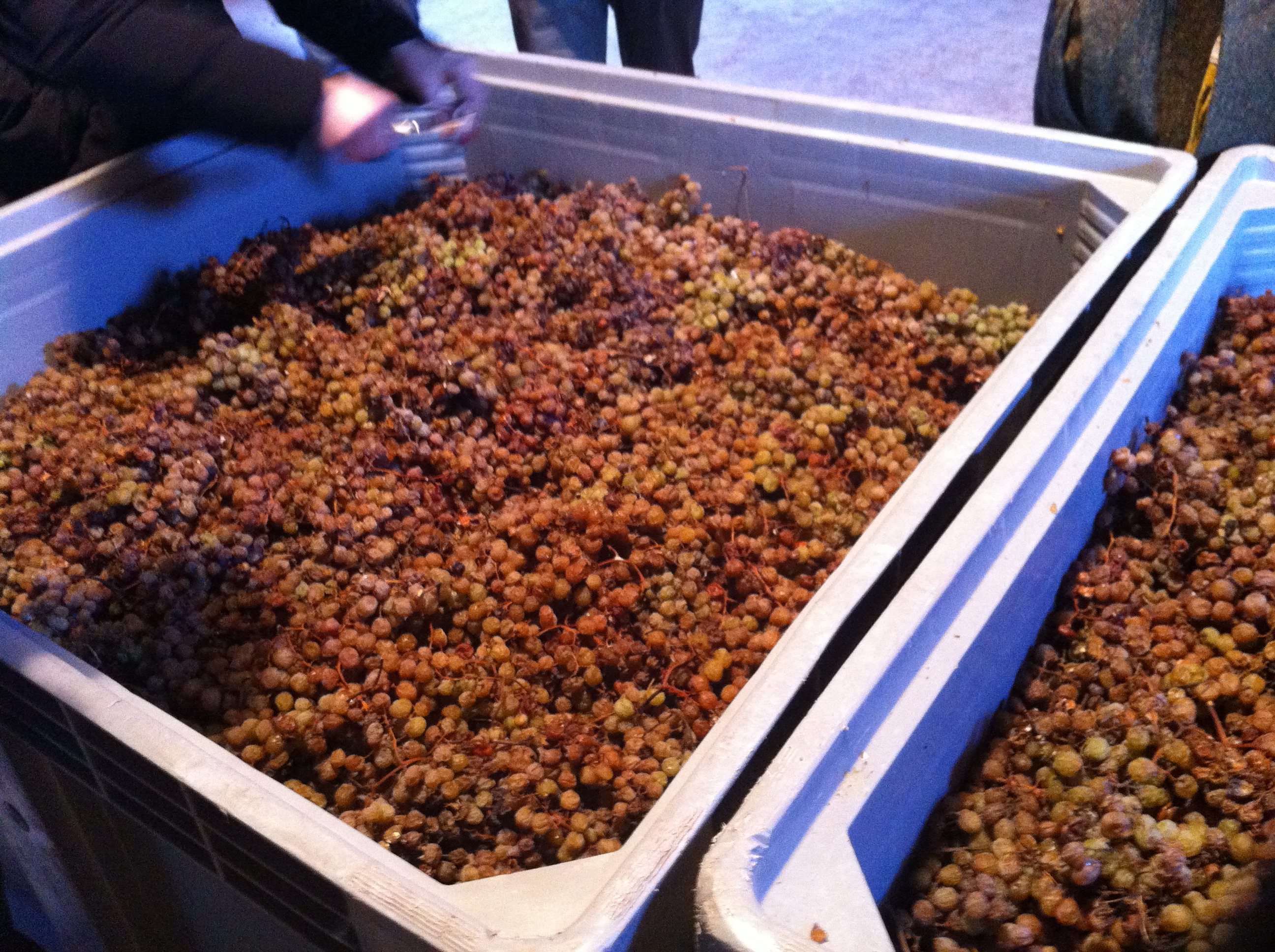|
Bonda (grape)
Bonda is a red Italian wine grape variety that is grown in the Aosta Valley region of northwest Italy around the communes of Châtillon and Quart. Historically the grape has been confused with another grape of Aosta, Primetta, but DNA analysis in the early 21st century showed that the two grapes were distinct and not closely related. Despite being known under the synonym of ''Prié rouge'', Bonda is not a color mutation of Prié blanc nor do the two grapes seem to be closely related.J. Robinson, J. Harding and J. Vouillamoz ''Wine Grapes - A complete guide to 1,368 vine varieties, including their origins and flavours'' pgs 123-124 Allen Lane 2012 History and relationship with other grapes Bonda has been growing in the Valle d'Aosta region since at least the 19th century when wine writers of the period suspected that the grape may be identical to the Mossana grape of Piedmont, a variety that today is no longer commercially cultivated. The historical synonym of ''Prié rouge' ... [...More Info...] [...Related Items...] OR: [Wikipedia] [Google] [Baidu] |
Italian Wine
Italian wine is produced in every region of Italy. Italy is the world's largest producer of wine, with an area of under vineyard cultivation, and contributing a 2013–2017 annual average of 48.3 million hl of wine. In 2018 Italy accounted for 19 per cent of global production, ahead of France (17 per cent) and Spain (15 per cent). Italian wine is both exported around the world and popular domestically among Italians, who consume an average of 42 litres per capita, ranking fifth in world wine consumption. The origins of vine-growing and winemaking in Italy has been illuminated by recent research, stretching back even before the Phoenician, Etruscans and Greek settlers, who produced wine in Italy before the Romans planted their own vineyards. The Romans greatly increased Italy's viticultural area using efficient viticultural and winemaking methods. History Vines have been cultivated from the wild ''Vitis vinifera'' grape for millennia in Italy. It was previously believed that ... [...More Info...] [...Related Items...] OR: [Wikipedia] [Google] [Baidu] |
Italian Grape Varieties ...
References Supplemental references used for chart *J. Robinson, J. Harding and J. Vouillamoz ''Wine Grapes - A complete guide to 1,368 vine varieties, including their origins and flavours'' pgs XXVIII-XXX Allen Lane 2012 {{DEFAULTSORT:Italian grape varieties, List of Italian wine * Wine-related lists Grape A grape is a fruit, botanically a berry, of the deciduous woody vines of the flowering plant genus '' Vitis''. Grapes are a non- climacteric type of fruit, generally occurring in clusters. The cultivation of grapes began perhaps 8,000 years a ... [...More Info...] [...Related Items...] OR: [Wikipedia] [Google] [Baidu] |
Varietal
A varietal wine is a wine made primarily from a single named grape variety, and which typically displays the name of that variety on the wine label.The American Heritage Dictionary of the English Language, Fourth Edition, 2000.winepros.com.au. Examples of grape varieties commonly used in varietal wines are Cabernet Sauvignon, Chardonnay and Merlot. Wines that display the name of two or more varieties on their label, such as a Chardonnay-Viognier, are ''blends'' and not varietal wines. The term is frequently misused in place of vine variety; the term ''variety'' refers to the vine or grape, while ''varietal'' refers to the wine produced by a variety. The term was popularized in the US by Maynard Amerine at the University of California, Davis after Prohibition seeking to encourage growers to choose optimal vine varieties, and later promoted by Frank Schoonmaker in the 1950s and 1960s, ultimately becoming widespread during the California wine boom of the 1970s. Varietal wines are ... [...More Info...] [...Related Items...] OR: [Wikipedia] [Google] [Baidu] |
Old Vine
Old or OLD may refer to: Places *Old, Baranya, Hungary *Old, Northamptonshire, England *Old Street station, a railway and tube station in London (station code OLD) *OLD, IATA code for Old Town Municipal Airport and Seaplane Base, Old Town, Maine, United States People *Old (surname) Music *OLD (band), a grindcore/industrial metal group * ''Old'' (Danny Brown album), a 2013 album by Danny Brown * ''Old'' (Starflyer 59 album), a 2003 album by Starflyer 59 * "Old" (song), a 1995 song by Machine Head *''Old LP'', a 2019 album by That Dog Other uses * ''Old'' (film), a 2021 American thriller film *''Oxford Latin Dictionary'' *Online dating *Over-Locknut Distance (or Dimension), a measurement of a bicycle wheel and frame *Old age See also *List of people known as the Old * * *Olde, a list of people with the surname *Olds (other) Olds may refer to: People * The olds, a jocular and irreverent online nickname for older adults * Bert Olds (1891–1953), Australian rules ... [...More Info...] [...Related Items...] OR: [Wikipedia] [Google] [Baidu] |
Ripe (wine)
In viticulture, ripeness is the completion of the ripening process of wine grapes on the vine which signals the beginning of harvest. What exactly constitutes ripeness will vary depending on what style of wine is being produced ( sparkling, still, fortified, ''rosé'', dessert wine, etc.) and what the winemaker and viticulturist personally believe constitutes ripeness. Once the grapes are harvested, the physical and chemical components of the grape which will influence a wine's quality are essentially set so determining the optimal moment of ripeness for harvest may be considered the most crucial decision in winemaking.J. Cox ''"From Vines to Wines"'' Fourth Edition, pg 97-106 Storey Publishing 1999 There are several factors that contribute to the ripeness of the grape. As the grapes go through ''veraison'', sugars in the grapes will continue to rise as acid levels fall. The balance between sugar (as well as the potential alcohol level) and acids is considered one of the most c ... [...More Info...] [...Related Items...] OR: [Wikipedia] [Google] [Baidu] |
Trentino-Alto Adige/Südtirol Wine
South Tyrol (called in Italian ''Alto Adige'') is an autonomous province located in north-east Italy producing wine. This Austro-Italian wine region is noted for the distinct Austrian influences on the wine industry due to the region's long history under the rule of Austria-Hungary and Holy Roman Empires.M. Ewing-Mulligan & E. McCarthy ''Italian Wines for Dummies'', pp. 109-118. Hungry Minds 2001 . Because of its unique history and location within the southern Alps and Dolomites, in this region grows a wide range of grape varieties that are not usually seen in other parts of Italy. These include Müller-Thurgau, Vernatsch, Lagrein, Sylvaner, Riesling (known in Italian as ''Riesling Renano''), Gewürztraminer (known in Italian as ''Traminer Aromatico'')P. Saunders ''Wine Label Language'' pp. 120–212 Firefly Books 2004 and Blatterle. Winemaking Winemaking in Tyrol has a long tradition: the first evidence dates back to the period before the Romans. The South Tyrolean winegr ... [...More Info...] [...Related Items...] OR: [Wikipedia] [Google] [Baidu] |
Nosiola
Nosiola (or Groppello bianco) is a white Italian wine grape variety that is grown in the Trentino region north of Lake Garda in the Valle dei Laghi.Joseph Batianich & David Lynch Vino Italiano: The Regional Wines of Italy" pg 80-81 Clarkson Potter Publishers Here it is used in varietal '' Denominazione di origine controllata'' (DOC) wines and as a blending component in wines such as ''Sorni Bianco'' from Trento.J. Robinson ''Jancis Robinson's Guide to Wine Grapes'' pg 129 Oxford University Press 1996 It is also used to produce a dessert wine in the '' Vin Santo'' style from grapes that have been allowed to dry out prior to fermentation.Oz Clarke ''Encyclopedia of Grapes'' pg 164 Harcourt Books 2001 History Ampelographers believe that the name Nosiola is derived from the Italian word ''nocciola'' (hazelnut) which could be a reference to the characteristic toasted hazelnut aromas that varietal examples of Nosiola exhibit. It could also be a reference to the grape berries t ... [...More Info...] [...Related Items...] OR: [Wikipedia] [Google] [Baidu] |
Ampelographer
Ampelography ( ἄμπελος, "vine" + γράφος, "writing") is the field of botany concerned with the identification and classification of grapevines, ''Vitis'' spp. Traditionally this has been done by comparing the shape and colour of the vine leaves and grape berries; more recently the study of vines has been revolutionised by DNA fingerprinting. Early history The grape vine is an extremely variable species and some varieties, such as Pinot, mutate particularly frequently. At the same time, the wine and table grape industries have been important since ancient times, so large sums of money can depend on the correct identification of different varieties and clones of grapevines. The science of ampelography began seriously in the 19th century, when it became important to understand more about the different species of vine, as they had very different resistance to disease and pests such as phylloxera. Many vine identification books were published at this time, one of which ... [...More Info...] [...Related Items...] OR: [Wikipedia] [Google] [Baidu] |
Grape Variety
This list of grape varieties includes cultivated grapes, whether used for wine, or eating as a table grape, fresh or dried (raisin, currant, sultana). For a complete list of all grape species including those unimportant to agriculture, see Vitis. The term ''grape variety'' refers to cultivars rather than actual botanical varieties according to the International Code of Nomenclature for Cultivated Plants, because they are propagated by cuttings and may have unstable reproductive properties. However, the term ''variety'' has become so entrenched in viticulture that any change to using the term ''cultivar'' instead is unlikely. Single species grapes While some of the grapes in this list are hybrids, they are hybridized within a single species. For those grapes hybridized across species, known as interspecific hybrids, see the section on multispecies hybrid grapes below. ''Vitis vinifera'' (wine) Red grapes White grapes Rose Grapes ''Vitis vinifera'' (table) ... [...More Info...] [...Related Items...] OR: [Wikipedia] [Google] [Baidu] |
Prié Blanc
Prié blanc is a white Italian wine grape variety that is grown almost exclusively in the Valle d'Aosta DOC of northwest Italy. The Valle d'Aosta varietal wine Blanc de Morgex et de La Salle is made from Prié blanc grapes. Ampelographers consider Prié blanc one of the oldest grape varieties in the Valle d'Aosta. Through a complex pedigree it appears to have some genetic relationship with most every other grape variety in the region. Recent DNA analysis has connected the grape to the Spanish wine grapes of Lairén in Andalusia and Albillo in Ribera del Duero and province of Ávila, but it is not yet known if the grape originated in Spain and traveled to Italy or the inverse.J. Robinson, J. Harding and J. Vouillamoz ''Wine Grapes – A complete guide to 1,368 vine varieties, including their origins and flavours'' pgs 845–848 Allen Lane 2012 History Ampelographers do not yet know definitively the origins of Prié blanc but evidence shows that it is a very old variety tha ... [...More Info...] [...Related Items...] OR: [Wikipedia] [Google] [Baidu] |
Color Mutation
The propagation of grapevines is an important consideration in commercial viticulture and winemaking. Grapevines, most of which belong to the ''Vitis vinifera'' family, produce one crop of fruit each growing season with a limited life span for individual vines. While some centenarian old vine examples of grape varieties exist, most grapevines are between the ages of 10 and 30 years. As vineyard owners seek to replant their vines, a number of techniques are available which may include planting a new cutting that has been selected by either clonal or mass (massal) selection. Vines can also be propagated by grafting a new plant vine upon existing rootstock or by layering one of the canes of an existing vine into the ground next to the vine and severing the connection when the new vine develops its own root system.Wine & Spirits Education Trust ''"Wine and Spirits: Understanding Wine Quality"'' pp. 2-5, Second Revised Edition (2012), London . In commercial viticulture, grapevines are ... [...More Info...] [...Related Items...] OR: [Wikipedia] [Google] [Baidu] |








